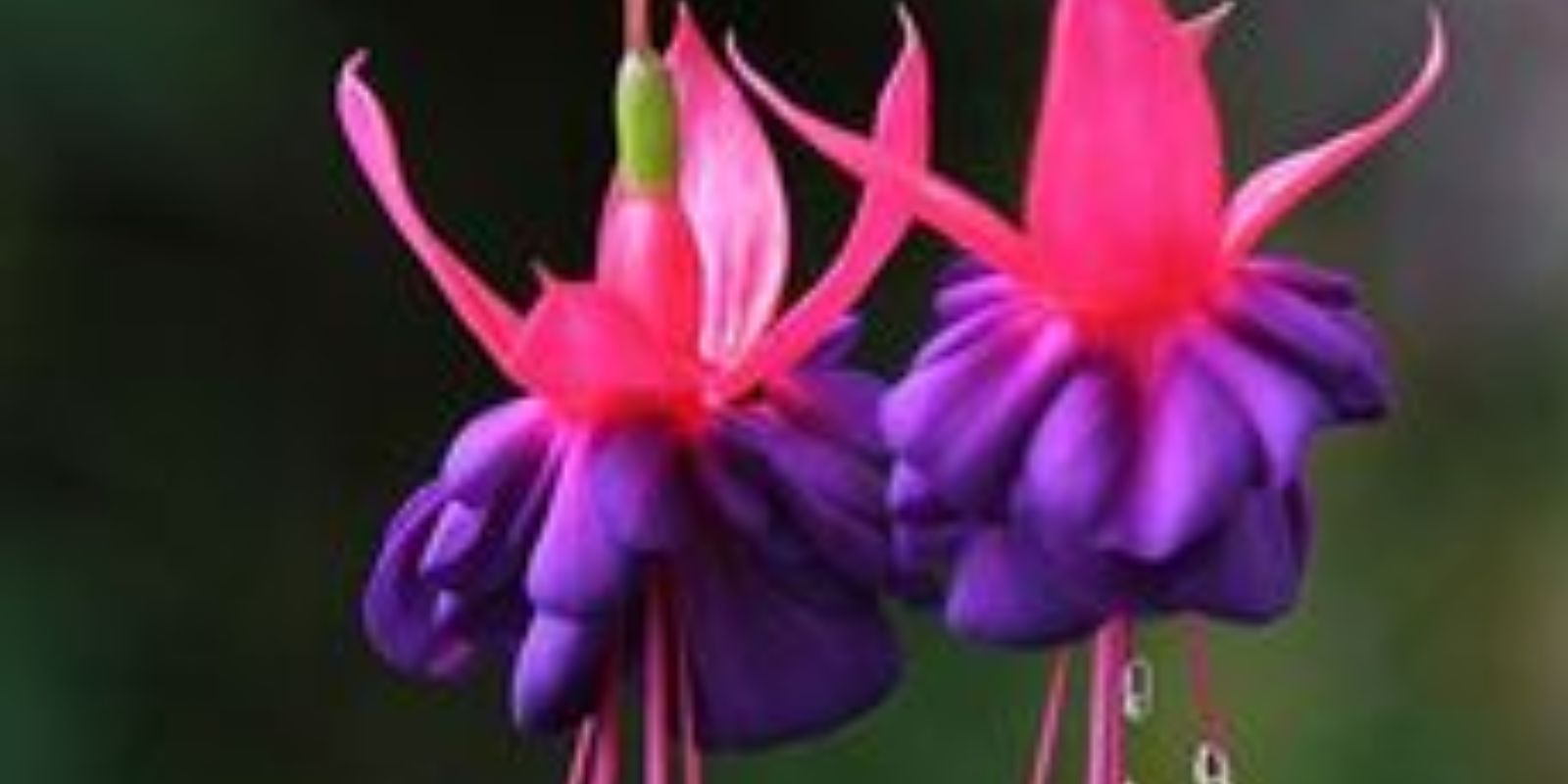Introduction
Fuchsias are celebrated for their striking, pendulous flowers and vibrant colors that can transform any garden into a visual masterpiece. Their unique blooms, which often feature a mix of pink, purple, red, and white hues, make them a favorite among gardeners. However, achieving the full splendor of fuchsias requires more than just planting them; it involves understanding their specific needs and providing optimal care. This article will delve into the secrets of growing and nurturing fuchsias, ensuring your garden is adorned with their breathtaking beauty.
Choosing the Right Fuchsia Variety
1. Understand Varieties and Their Needs
Fuchsias come in various types, including trailing, bush, and hardy varieties. Selecting the right type for your garden is crucial.
- Trailing Fuchsias: Ideal for hanging baskets and containers, these varieties spill over the edges, creating a cascade of color.
- Bush Fuchsias: These grow in a more upright form and are perfect for garden beds or as standalone shrubs.
- Hardy Fuchsias: Suitable for regions with colder winters, these varieties can withstand frost and continue to thrive year after year.
2. Consider Your Climate
Fuchsias prefer a temperate climate with moderate temperatures. If you live in a region with extreme cold or heat, choose varieties that are suited to your local conditions or consider growing them in containers that can be moved to more favorable environments.
Preparing the Soil
1. Soil Requirements
Fuchsias thrive in well-draining soil that is rich in organic matter. The soil should be slightly acidic to neutral, with a pH between 6.0 and 7.0.
- Soil Composition: Mix garden soil with compost or well-rotted manure to improve fertility and drainage.
- Drainage: Ensure the planting area has good drainage to prevent waterlogging, which can lead to root rot.
2. Soil Preparation
Before planting, prepare the soil by loosening it to a depth of about 12 inches. Incorporate organic matter and ensure the soil is moist but not waterlogged.
Planting Fuchsias
1. Timing
Plant fuchsias in spring or early summer, after the last frost date. This gives them time to establish before the heat of summer or the cold of winter.
2. Planting Procedure
- Spacing: Space plants 12 to 18 inches apart to allow for their growth and spread.
- Depth: Plant fuchsias at the same depth as they were in their pots. Avoid burying the base of the plant too deep.
- Position: Place fuchsias in a location with partial shade or filtered sunlight. Too much direct sun can scorch their delicate leaves and flowers.
Watering and Fertilizing
1. Watering Needs
Fuchsias require consistent moisture but do not tolerate soggy soil. Water them regularly, especially during dry periods.
- Watering Frequency: Water when the top inch of soil feels dry. During hot weather, you may need to water more frequently.
- Watering Technique: Water deeply to ensure that the roots receive adequate moisture. Avoid getting water on the foliage to prevent fungal diseases.
2. Fertilizing
Feed fuchsias with a balanced fertilizer every 4 to 6 weeks during the growing season (spring and summer).
- Fertilizer Type: Use a balanced, water-soluble fertilizer with an equal ratio of nitrogen, phosphorus, and potassium.
- Application: Follow the manufacturer’s instructions for dosage and application. Over-fertilizing can lead to excessive foliage growth at the expense of blooms.
Pruning for Health and Beauty
1. When to Prune
Pruning helps maintain the shape of the plant and encourages more blooms. Perform pruning in late winter or early spring before new growth begins.
- Deadheading: Regularly remove spent flowers to encourage continuous blooming.
- Shaping: Trim back leggy stems and any overgrown areas to promote a fuller, bushier appearance.
2. Pruning Technique
- Tools: Use clean, sharp pruners to make clean cuts.
- Pruning Cuts: Remove any dead, diseased, or crossing branches. Prune back to just above a leaf node or a lateral branch to stimulate new growth.
Protecting Fuchsias from Pests and Diseases
1. Common Pests
Fuchsias can be susceptible to pests such as aphids, spider mites, and whiteflies.
- Inspection: Regularly check for signs of pests. Look for discolored or damaged leaves and sticky residue.
- Treatment: Use insecticidal soap or neem oil to treat infestations. Ensure to follow the product’s instructions for safe and effective use.
2. Disease Prevention
Fungal diseases like powdery mildew and botrytis blight can affect fuchsias, especially in humid conditions.
- Prevention: Ensure good air circulation around the plants. Avoid overhead watering to keep the foliage dry.
- Treatment: If diseases are detected, remove affected parts and apply appropriate fungicides as needed.
Winter Care and Overwintering
1. Hardy Varieties
If you have hardy fuchsias, they may survive winter with minimal protection.
- Mulching: Apply a layer of mulch around the base of the plants to insulate the roots.
2. Non-Hardy Varieties
Non-hardy fuchsias should be overwintered indoors or in a protected location.
- Indoor Care: Move potted fuchsias indoors before the first frost. Place them in a cool, bright area with temperatures around 50-60°F (10-15°C).
- Watering Indoors: Reduce watering during the winter months, as plants will need less moisture.
Troubleshooting Common Issues
1. Poor Blooming
- Possible Causes: Insufficient light, over-fertilization, or incorrect watering.
- Solutions: Ensure proper light conditions, adjust fertilization practices, and check watering habits.
2. Leaf Drop
- Possible Causes: Overwatering, under-watering, or temperature extremes.
- Solutions: Adjust watering frequency and ensure the plant is in a stable environment.
Conclusion
Cultivating and caring for fuchsias can be a rewarding experience that enhances the beauty of your garden with their spectacular blooms. By understanding the specific needs of fuchsias and following the steps outlined—choosing the right variety, preparing the soil, planting correctly, and providing consistent care—you can achieve a garden that dazzles with vibrant colors and lush foliage. Embrace these secrets and watch as your garden transforms into a stunning display of fuchsia brilliance.

